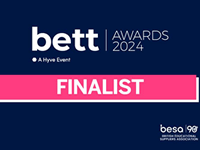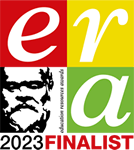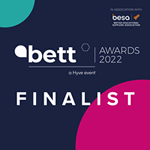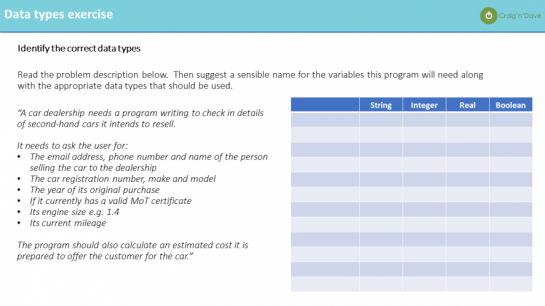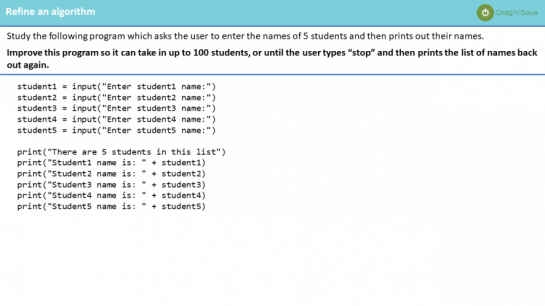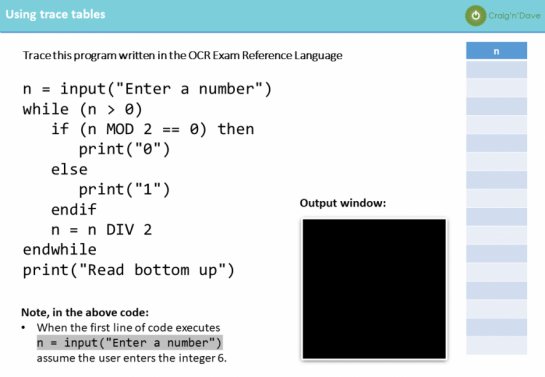Computational thinking and programming revision unit
Once students have had plenty of practice with programming, towards the end of the course with our revision unit, teachers can change the focus to revising computational thinking and programming to prepare for examinations. The activities are designed to tackle the four question areas: design, write, test and refine algorithms.
Examples of activities include:
- Identifying appropriate data types.
- Designing solutions to problem by producing pseudocode and flowcharts.
- Refining algorithms written in the OCR Exam Reference Language, flowcharts and natural English.
- Using trace tables.
- Identifying appropriate test data.
- Creating test plans.
- Writing algorithms from scratch based on scenarios in the OCR Exam Reference Language and a high-level language.
The examples shown are from the OCR J277 course. Each specification we support has a bespoke unit to ensure a perfect match to each course requirement.
Registered in England and Wales: 10442992
VAT Number: 290 9845 58
Telephone: 01452 947500
Email: admin@craigndave.co.uk
